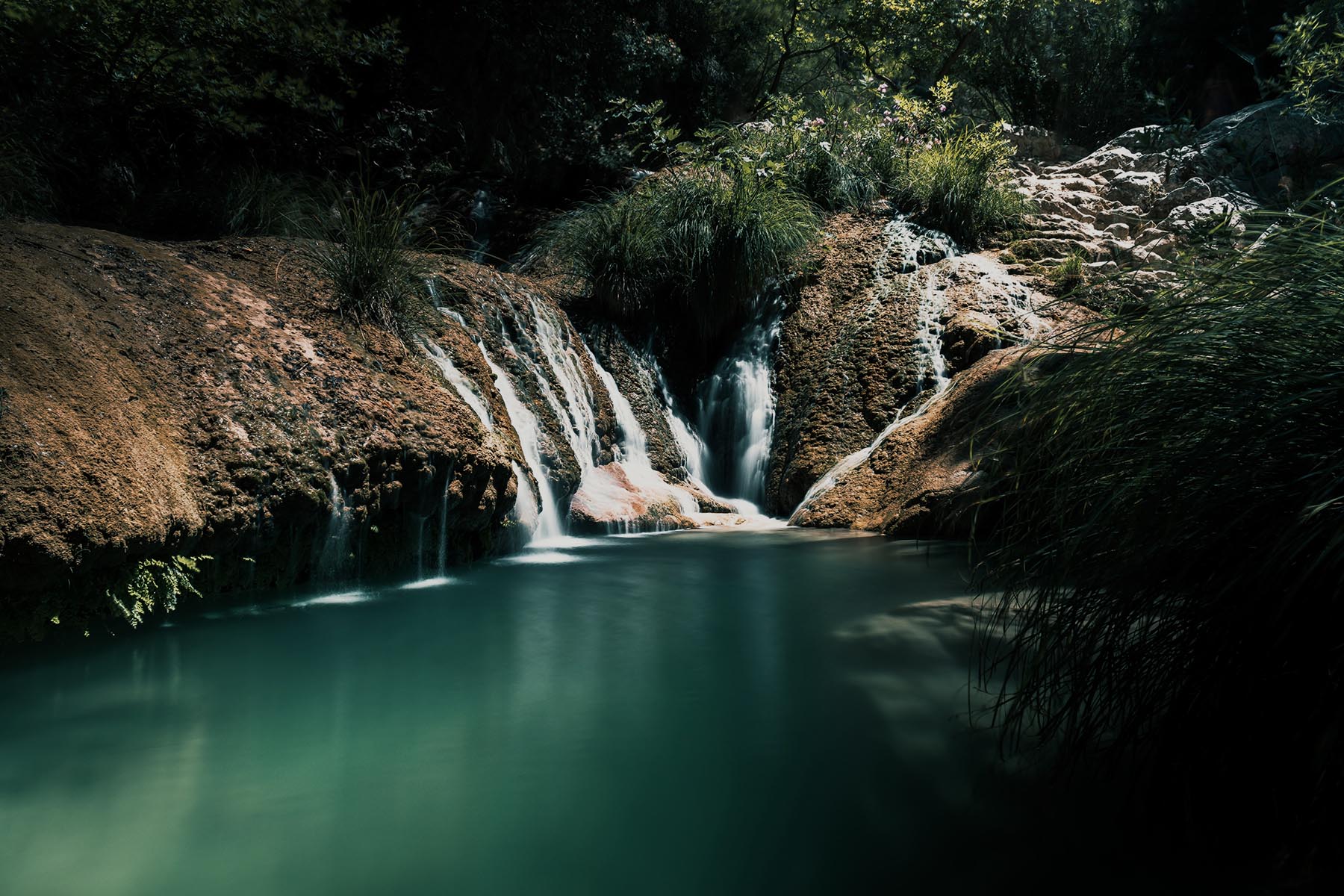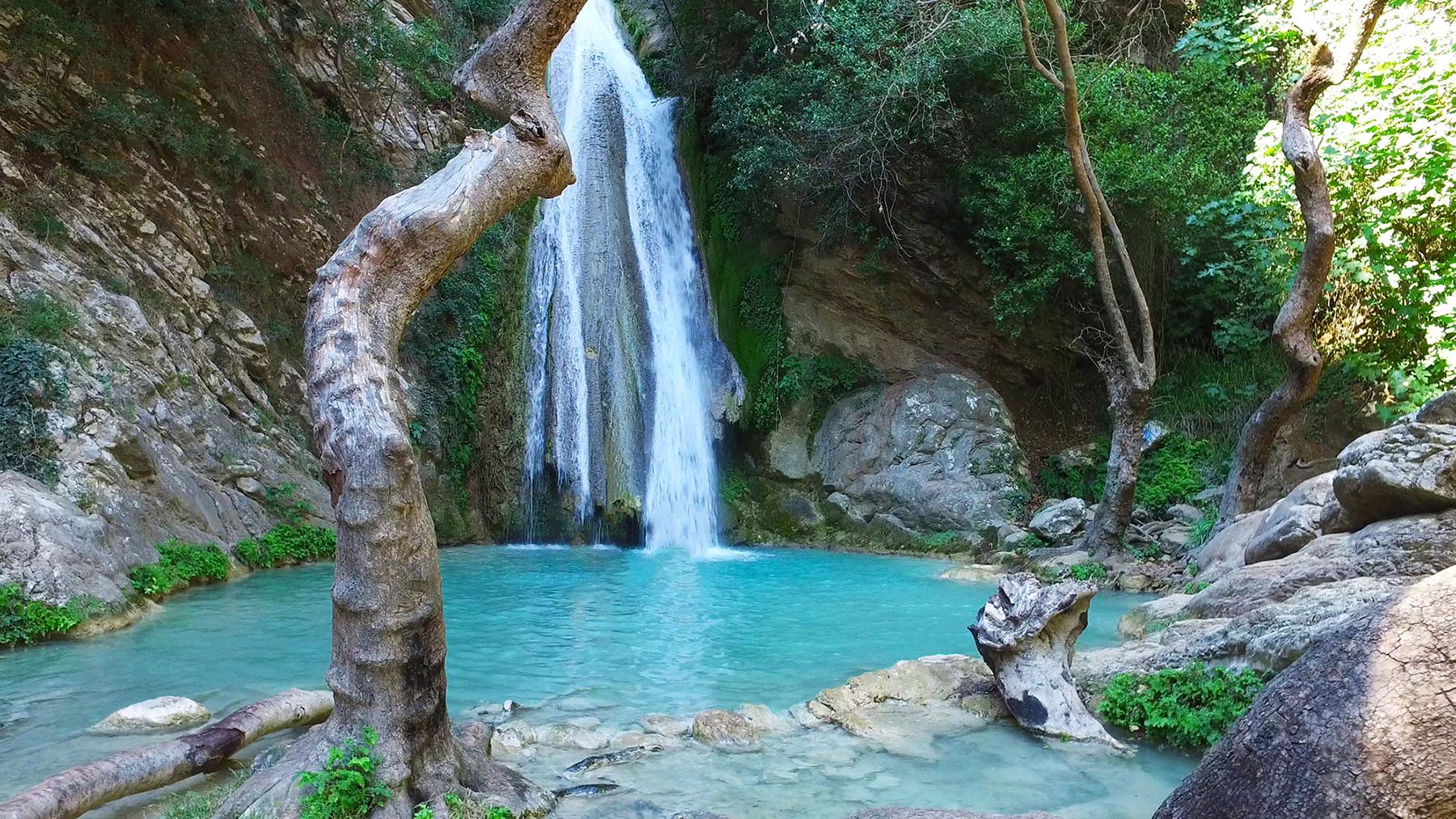Sightseeing in Messenia
Greek summer at its finest: beautiful beaches, quaint fishing villages, endless olive groves, coastal
and mountain trails with glorious views in Western Messinia. And beyond that: ancient civilisations,
Mycenaean palaces and the Gialova wetland, the only one of its kind in Greece.
Nedas’ Waterfall
According to the Greek Mythology, Neda was a Nymph, a goddess of waters. Neda together with two other Nymphs, Theisoa and Hagno, nursed the infant Zeus after his birth and saved the divine infant from Cronus, who ate his own children. The springs of Neda are on the foothill of Mount Lykaion. In Phigaleia Neda takes up the waters of the Lymax affluent where the “White Water” (“Aspro Nero”) waterfall is formed. Lymax, Neda’s affluent, took its name after Rhea’s labor, because when she gave birth to Zeus on Mount Lykaion the Nymphs threw the waste matter (“lymata” in Greek) of the labor to this river. In the location where the Lymax’s waters merge with Neda’s waters there was the sacred temple of Eurynome. The temple was built to the east of Phigaleia city at an inaccessible, rough and rocky location at the edge of the steep and large rock where the “White Water” waterfall is formed.
Polilimnio
15 lakes with different strange names such as Mavrolimna, Kadi, Kadoula, Lucky’s, Italian’s, Panagos’s, Stathoula’s, well hidden for many years, have become known to the public only recently and opened to visits of nature’s friends. In the summer many are those who prefer the cool waters of the lakes of Polilimnio to swim, as for example in lake Kadoula, which was named after its heart-like shape. The waterfall offers a unique experience to whoever reaches it, while the bravest ones get themseleves to impressive dives from the surrounding rocks in the lake’s deep waters.



